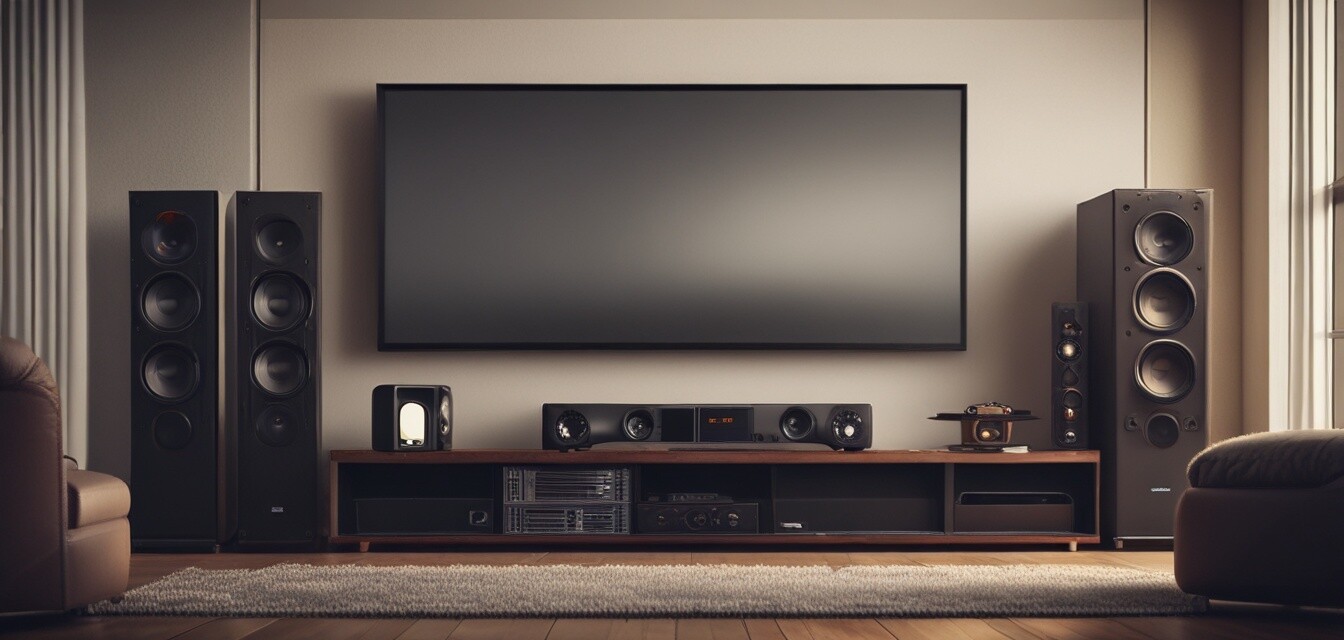
In-Depth Guide to Home Theater Receivers
Key Takeaways
- Understand the different types of home theater receivers available.
- Consider crucial features such as HDMI inputs, audio formats, and power output.
- Prioritize your needs based on room size and audio preferences.
- Explore options within your budget to find the best value.
- Check for compatibility with other audio and video components in your setup.
Home theater receivers are crucial for creating a compelling audio-visual experience in your living spaces. The right receiver can greatly enhance your enjoyment, whether you're hosting movie nights, gaming with friends, or diving into your favorite music. In this guide, we’ll examine the essentials to consider when selecting a home theater receiver, along with tips and tricks to maximize your audio setup.
What is a home theater receiver?
A home theater receiver acts as the central hub for your audio and video components, connecting various devices, including speakers, televisions, and gaming consoles. It processes and amplifies audio signals, ensuring the best sound quality for your viewing or listening experience. Home theater receivers come in different configurations and with various features, catering to a wide range of preferences and budgets.
Types of home theater receivers
Understanding the different types of receivers will help you make an informed choice. Here’s a look at the main categories:
| Type | Description |
|---|---|
| AV Receiver | An all-in-one solution that handles both audio and video signals, supporting multiple formats. |
| Stereo Receiver | Primarily focused on audio, designed for music enthusiasts who prefer stereo sound. |
| Network Receiver | Integrates streaming capabilities, allowing you to listen to music from various online sources. |
| Integrated Amplifier | A combination of an amplifier and a preamp, ideal for stereo sound without video processing. |
Key features to consider
When choosing a home theater receiver, it's crucial to know what features you need. Below is a comprehensive list of features to keep in mind:
- HDMI Inputs: Ensure the receiver has enough HDMI inputs for all your devices.
- Audio Formats: Look for receivers supporting various audio formats like Dolby Atmos or DTS:X for immersive sound.
- Power Output: Check the power rating (measured in watts per channel) to match it with your speakers for optimal performance.
- Multi-Room Capability: If you plan to play music in multiple rooms, consider a receiver with multi-zone functionality.
- Wireless Connectivity: Look for Bluetooth and Wi-Fi options for easier streaming from various devices.
How to choose the right home theater receiver
Choosing the right home theater receiver requires a careful evaluation of your needs and preferences. Here’s a step-by-step guide:
- Assess Your Room Size: The size and acoustics of your room will influence the power output and audio configuration you require.
- Define Your Audio Needs: Determine whether you prioritize music, movies, or gaming. Different receivers may excel in different areas.
- Set a Budget: Decide how much you are willing to spend. Remember that a higher price doesn’t always mean better quality.
- Research Brands: Look for reputable brands known for quality home theater receivers.
- Read Reviews: Delve into customer reviews and expert opinions to gauge the performance and reliability of the models you're considering.
Popular receiver brands to consider
The following brands are frequently recommended due to their quality and reliability in the audio industry:
| Brand | Strengths |
|---|---|
| Yamaha | Known for robust features and quality sound. |
| Denon | Excels in video processing and sound quality. |
| Pioneer | Great for mixing audio and sleek designs. |
| Onkyo | Good entry-level options with solid performance. |
Final recommendations
Once you’ve narrowed down your choices based on features, budget, and reviews, take the time to test the receivers in-store if possible. Listening to a few audio samples can help you decide which receiver suits your tastes best.
Pros
- Enhances overall audio experience at home.
- Allows for easy switching between multiple devices.
- Supports various surround sound formats for immersive listening.
Cons
- Can be complicated to set up for beginners.
- Higher-end models can be expensive.
- Sound quality may vary based on room acoustics.
For more insights on specific types of speakers, check out our Bluetooth speakers to enhance your audio experience. Or, explore the options in our Home theater systems category for a complete audio solution.
Armed with the right information and tips, you can confidently navigate your choices and find the perfect home theater receiver that meets your needs. Enjoy the journey to outstanding sound quality!